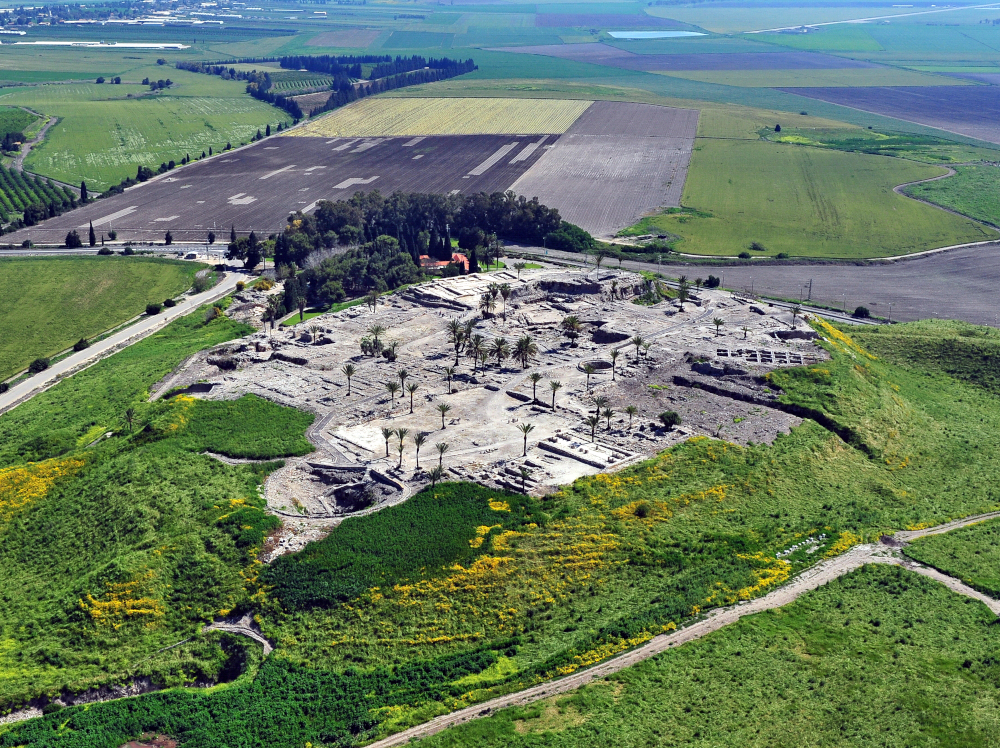Har Megiddo (pictured) in Northern Israel, (הר מגידו) rendered Armageddon in the Bible is the site of a former Bible battle – as well as the site that some Christians believe will be the site of a future one.
Josiah, the boy king who led Israel back to God, was killed in battle there, killed by Egyptians. Necho king of Egypt was passing through Israel on the way to fight a northern enemy and told Josiah he did not want to fight Josiah’s forces.
“Josiah, however, would not turn away from him, but disguised himself to engage him in battle. He would not listen to what Necho had said at God’s command but went to fight him on the plain of Megiddo.
“Archers shot King Josiah, and he told his officers, “Take me away; I am badly wounded.” So they took him out of his chariot, put him in his other chariot and brought him to Jerusalem, where he died. He was buried in the tombs of his ancestors, and all Judah and Jerusalem mourned for him.” (2 Chronicles 35:22–34)
(It’s interesting that Necho was the one listening to God.)
“For the first time, a team of Israeli archaeologists has uncovered ancient artifacts at northern Israel’s “Armageddon” site that might offer proof of an epic battle documented in the books of 2 Kings and 2 Chronicles between a king of Judah and an Egyptian pharaoh,” the Times of Israel reports.
“Two academic papers published earlier this year explained how an unprecedented amount of 7th-century BCE Egyptian pottery was found in recent excavations at Megiddo, suggesting that Egyptian soldiers were indeed in the right biblical place at what could be the right biblical period.”
“‘It is important to note that the re-establishment of the site as an Egyptian stronghold in the late 7th century BCE had long been suspected, mostly based on a biblical verse in the Book of Kings, which described Josiah’s execution at Megiddo by Pharaoh Necho,’”’ said Dr. Assaf Kleiman of Ben Gurion University, a senior member of the Megiddo Expedition staff who led the studies published in Egypt and the Levant and the Scandinavian Journal of the Old Testament.“
The Megiddo Expedition has had to deal with four previous excations, some of which were destructive. So finding the Egytian pottery delighted the expiditioners. “Finding undisturbed remains of the Assyrian period in Megiddo had always been a passion of mine since it was widely believed that these remains were completely removed by the expedition that worked at the site in the early 20th century,” said Kleiman.”
Image: Tel Megiddo. Image Credit: Avram Graicer / Wikimedia

